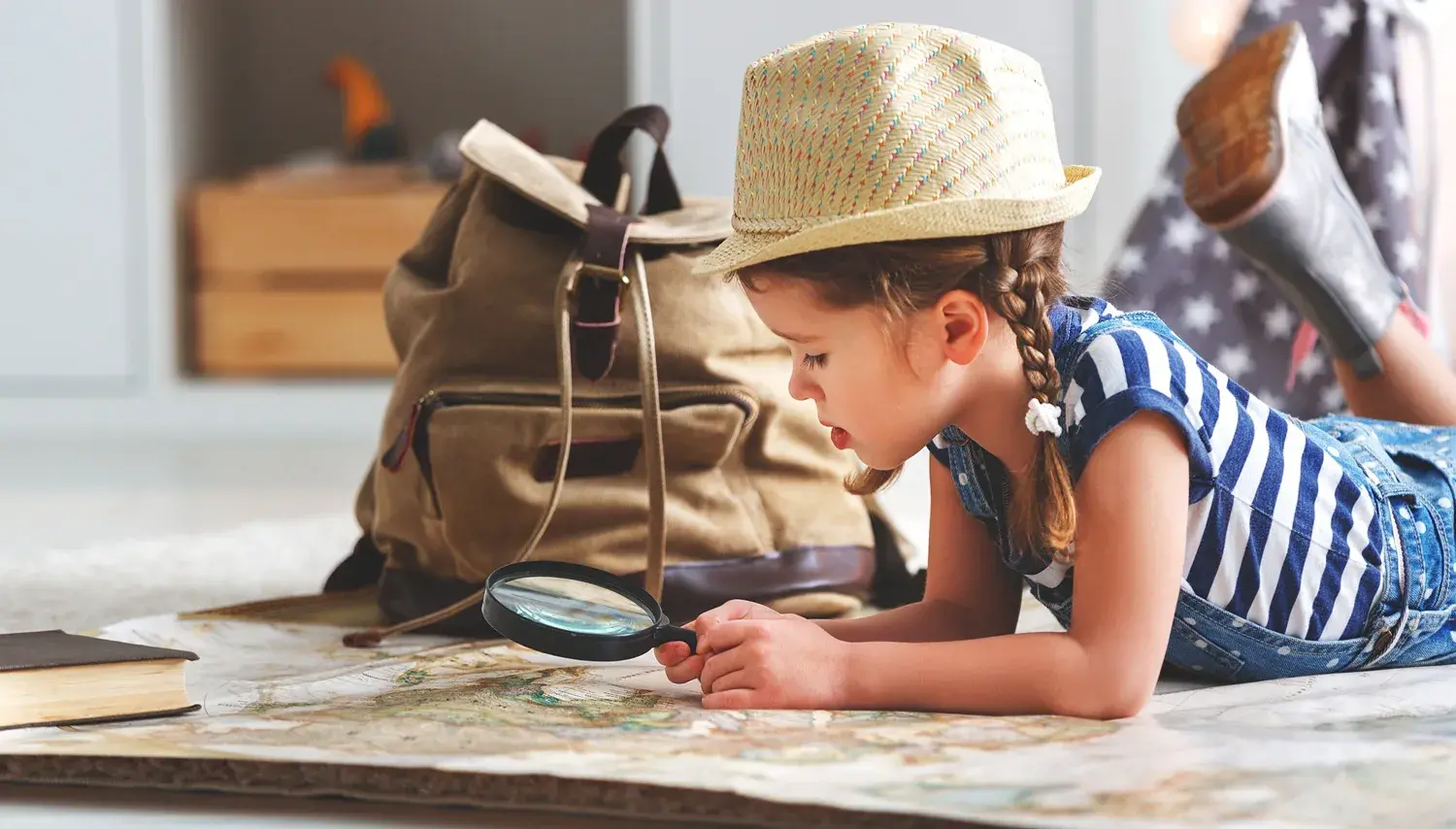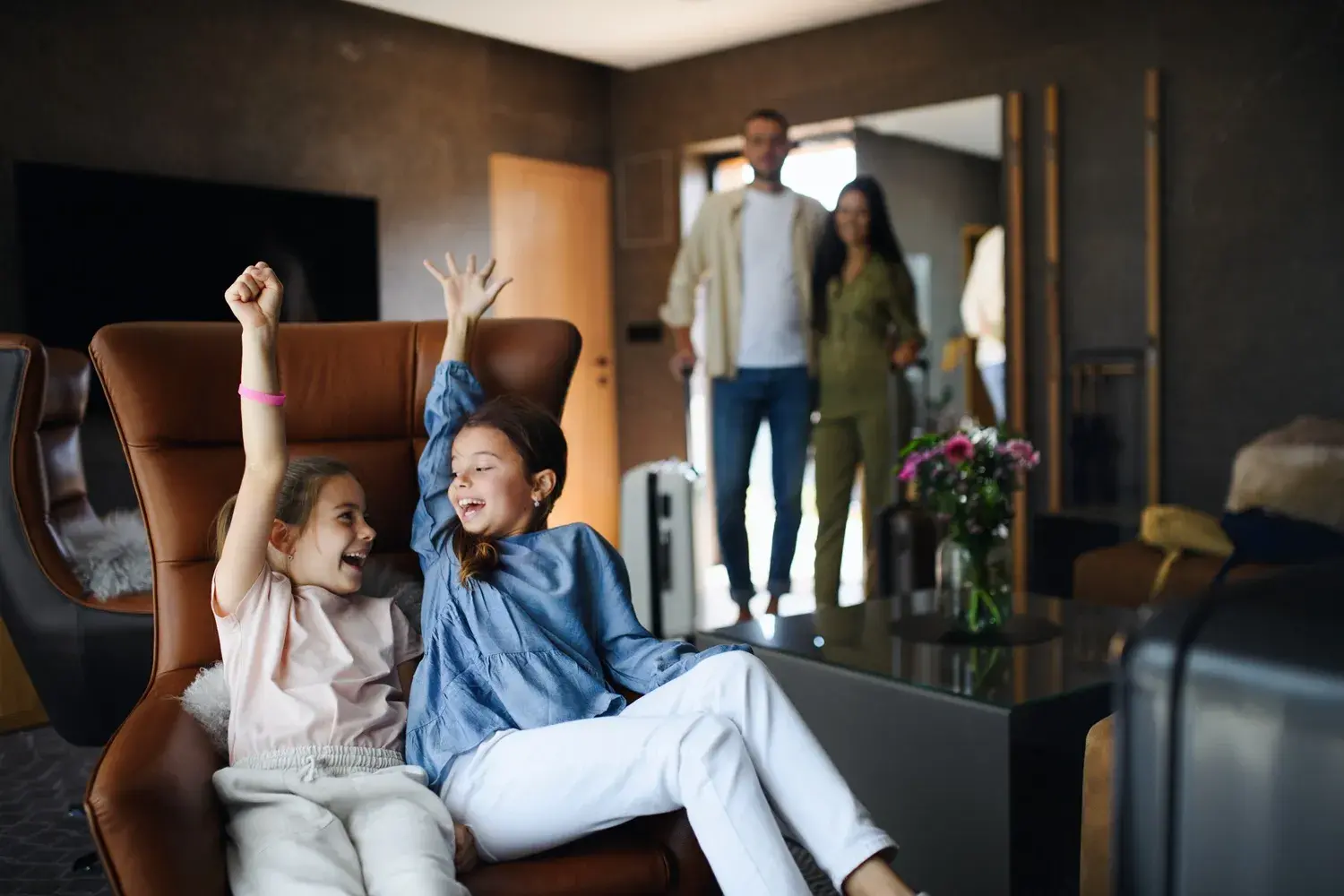
Traveling with school-age children (3–9 years old) means opening a window to the world through their curious eyes.
This age is magical — they want to see everything, understand everything, taste everything — yet still need their familiar routines, rhythms, and little habits.
Family trips can quickly turn into unforgettable experiences if you prepare with care and stay flexible.
Because a successful family holiday is always about balance: plan without overloading, explore without exhausting, have fun without stressing.
Find our free guide with detailed checklists, tips and useful apps at the end of this article!
Children at this age love to be involved. This is the perfect time to include them in trip planning — choosing outfits, packing their favorite toys, or checking off a fun illustrated list.
💡 Universal Tip:
Turn preparation into a game! Give them a map of the route, show photos of the destination on Google Maps, or let them count down the days on a calendar.

Try using apps like Trello Family Travel or PackPoint, which let you tick off each family member’s suitcase list.
If you’re traveling in France, note that the French autumn school holidays (“Vacances de la Toussaint”) usually fall between mid-October and early November.
It’s a very popular time for French families — roads, attractions, and accommodations get busier — so booking everything in advance is highly recommended.
Whether you’re traveling by car, train, or plane, the secret is to create rhythm and avoid boredom.
Plan regular stops — about every two hours — to play, stretch, or have a picnic.
Some children suffer from motion sickness when traveling by car, train, or plane.
Bring suitable medication (prescribed by your pediatrician) — or try fun, effective alternatives: acupressure wristbands, anti-nausea glasses, or ginger candies, all easy to find in pharmacies or online.

French trains often have family-friendly sections (such as on TGV INOUI), which are quieter and less stressful.
Prepare a “surprise bag” with a small toy or snack to open every hour.
Kids love the idea of “flying.” Explain each step: boarding, take-off, landing.
Bring child-size headphones, stickers, a drawing pad, and plenty to drink (air pressure changes can cause thirst).
Crossing time zones? Keep a mini routine: the same bedtime story, a familiar song, the same stuffed toy.
And remember: French restaurant kitchens often close around 2:00 p.m. for lunch and 9:30–10:00 p.m. for dinner.
Most supermarkets close after 7:30 p.m. and on Sunday afternoons, so plan ahead and keep some basic supplies on hand.
Good news: with OIQIA, arrivals are completely autonomous — no rushing, no stress if you arrive late.
You can check in at any time, and every OIQIA accommodation has a fully equipped kitchen (plus coffee for the morning!) so you can stay flexible around restaurant hours.
👉 Choose an accommodation that fits conveniently along your route.
Once there, kids in this age group need a predictable rhythm — steady mealtimes, regular breaks, and simple reference points.
Pick experiences where they can touch, create, and move:
💡 Encourage independence:
Let them hold the map, choose their ice cream flavor of the day, or take the souvenir photo.
In France, dining follows a fairly fixed schedule:
Kitchens usually close between these hours — a real culture shock for some visitors!
👉 TIPS – For International Parents in France
Always keep a small snack on hand, or look for “service continu” restaurants (brasseries, cafés, or food courts) that serve meals throughout the day.
Even with the best planning, family trips always come with surprises — a forgotten toy, an unexpected downpour, a tired child at 10 a.m.
Coming home is also part of the journey.
Let the kids share their stories with friends and teachers.
Print a small album or create a family travel journal together — paste tickets, maps, and photos.
Talk about what they learned: “What did you like best? What would you do again?”
Les applications comme Cheerz ou Canva Kids permettent de créer des albums numériques très simplement, parfaits pour occuper un dimanche pluvieux.
💡 TIPS – Memory Makers
Apps like Cheerz or Canva Kids make it easy to create digital albums — a perfect rainy Sunday activity.
Traveling with children aged 3–9 is about planting seeds of wonder.
These adventures build lifelong family memories, spark curiosity, and strengthen bonds.
The secret?
👉 Prepare together, stay flexible, and welcome the unexpected as part of the adventure.

And to make your trip even smoother, download our free PDF Guide “Family Travel Made Easy” — complete with checklists, practical charts, useful tools, and universal tips for all ages.
Make your travel a joy, not a stress with these checklists, practical tables, useful tools and universal tips.

Chaque article vous inspire ? Transformez l’envie en réalité grâce à nos hébergements haut de gamme, pensés pour les voyageurs exigeants : design soigné, cuisine équipée, emplacement idéal, confort absolu.
Du week-end romantique à l’escapade culturelle, vivez la France dans les meilleures conditions.
Find all the latest tourism news, our offers and travel advice, and lots of gifts and surprises!